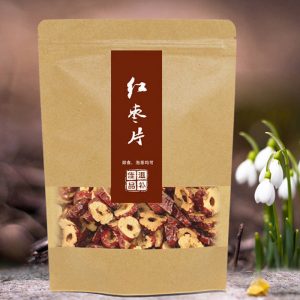Eco Bag
The environmental protection bag should have two definitions. On the one hand, it can be reused with natural materials; on the other hand, it means that it will not leave solid waste in the natural environment after it is broken, which will cause harm to the environment (or the environment). The hazard is small compared to other materials).
Generally, plastic bags are difficult to degrade after being discarded in the environment, and even if a small amount of decomposition occurs, harmful substances are generated. The environmental protection bag can be used to avoid such environmental pollution.
definition
Plastic shopping bags are consumables in daily life, and China consumes a large number of plastic shopping bags every year. Plastic shopping bags, while providing convenience to consumers, have also caused serious waste of energy resources and environmental pollution due to excessive use and recycling. In particular, ultra-thin plastic shopping bags are easily damaged, and most of them are discarded at will, becoming the main source of “white pollution”. More and more countries and regions have restricted the production, sale and use of plastic shopping bags. In order to implement the scientific development concept, build a resource-conserving and environment-friendly society, take effective measures from the source, urge enterprises to produce durable and easy-to-recycle plastic shopping bags, guide and encourage the masses to rationally use plastic shopping bags, and promote comprehensive utilization of resources. Protect the ecological environment and further promote energy conservation and emission reduction.
The so-called eco-bags generally mean that the materials they are made can be naturally degraded, and the time to be lowered [2] will not be too long. At the same time, the bags that can be used repeatedly can be called eco-bags.
BOD5 refers to a comprehensive indicator of the content of aerobic substances such as organic compounds in water. When the organic matter contained in the water is in contact with air, it is decomposed by the action of aerobic microorganisms, and the amount of oxygen required to be inorganicized or gasified is the biochemical oxygen demand. Expressed in milligrams per liter. It is determined by adding a microorganism capable of decomposing organic matter and oxygen-saturated water to the measured water sample, reacting at a certain temperature (20 ° C) for a predetermined number of days, and then measuring the amount of oxygen in the water.
Dissolved oxygen
The dissolved oxygen is affected by water temperature, pressure and solute (such as salt), decreases with increasing water temperature, and increases in proportion to the partial pressure of oxygen in the atmosphere. Due to the contamination of water, the presence of organic spoilage substances and other reducing substances, dissolved oxygen is consumed, so the cleaner the water, the more dissolved oxygen is contained; the more water pollution, the less dissolved oxygen.
COD
It is the amount of oxidant consumed when treating a water sample with a certain strong oxidizing agent under certain conditions, expressed in milligrams per liter of oxygen. It uses a chemical oxidant to oxidize the reducing material in the water sample and then calculate the oxygen consumption from the amount of remaining oxidant. It can be measured by the potassium dichromate method or by the permanganate method.
API
The air quality weekly report is based on the results of routine monitoring of several common pollutants specified in the National Ambient Air Quality Standards. The air quality in the city is evaluated within one week and is released to the public in the form of an air pollution index.
The AIR POLLUTION INDEX (API) is a method for reflecting and evaluating air quality. It simplifies the concentration of several air pollutants that are routinely monitored into a single conceptual numerical form and categorizes the air quality status. The degree of air pollution, the results are concise and intuitive, easy to use, suitable for indicating the short-term air quality conditions and trends of the city.
Principles for determining the air pollution index
The quality of air depends on the degree of contamination of the most harmful pollutants in various pollutants. The air pollution index determines the classification of pollution index and the corresponding pollutant concentration limit according to the ambient air quality standards and the impact of various pollutants on human health and ecological environment. At present, the grading standards for air indices used in China are: (1) the concentration of pollutants corresponding to 50 points of air pollution index (API) is the national average standard for daily air quality; (2) the concentration of pollutants corresponding to API 100 points is national air. (2) The pollutant concentration corresponding to the API200 point is the national air quality daily average value III standard; (4) The higher level segment of the API corresponds to the different effects of various pollutants on human health. The concentration limit, API500 point corresponds to the concentration of various pollutants when the human body is seriously harmed.
According to the characteristics of air pollution in China and the focus of pollution prevention and control work, the pollutants included in the air pollution index are tentatively scheduled to be: sulfur dioxide, nitrogen oxides and total suspended particulate matter. With the deepening of environmental protection work and the improvement of monitoring technology, we will adjust and increase other pollution projects to reflect the pollution situation more objectively.
Calculation and reporting of air pollution index
The relationship between the pollution index and the concentration of various pollutants is a piecewise linear function (see Table 1 and Figure 1). The sub-index In of each pollutant is calculated by interpolation. For the specific calculation method, please refer to the Environmental Monitoring Briefing, 1997. In the 9th issue, the largest of the pollutant sub-indices represents the pollution index of the region or city. Namely: API=max(I1, I2···Ii,···In)
The pollutants corresponding to the index are the primary pollutants in the region or city. When the API value of the pollution index is less than 50, the primary pollutants are not reported.
For more information about paper bags, please pay attention to sinceyoungpackage, if you have any comments on our information, welcome feedback.











